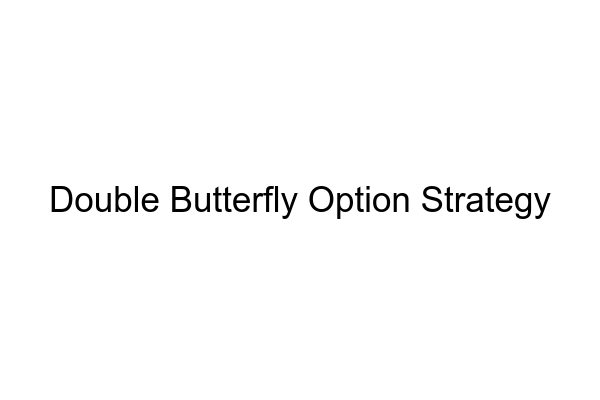Double Butterfly Option Strategy

What are the characteristics of this option strategy?
The double butterfly option strategy is a combination of two equal and opposite butterfly spreads. This strategy is used when an investor is expecting a little movement in the underlying stock but would like to take advantage of any possible upward or downward movements. They are also known as iron butterfly options because they have both a long and a short option.
Is this a bullish, bearish, or neutral strategy?
The double butterfly option strategy can be used with a bullish or bearish outlook or in a neutral market. It gives the investor the opportunity to take advantage of a range-bound market and when the investor correctly predicts the direction of the stock movement, they can make a profit.
Is this a beginner or an advanced option strategy?
The double butterfly option strategy is an advanced strategy as it requires an understanding of how options work as well as complicated calculations to set up the positions. It may not be suitable for beginners as it is a riskier strategy than other options strategies.
In what situation will I use this strategy?
This strategy can be used when an investor believes a stock will stay within a certain range and is comfortable with risking the wider pricing spreads associated with the strategy. It is also useful when an investor is trying to hedge a portfolio.
Where does this strategy typically fall in the range of risk-reward and probability of profit?
The double butterfly option strategy typically falls in the range of moderate risk-moderate reward and medium probability of profit. The chance of profit is slightly better than the chance of loss, although giving up some potential profit is often necessary to reduce the risk.
How is this strategy affected by the greeks?
The double butterfly option strategy is affected by delta, gamma, vega, and theta, as with any other option strategy. Delta measures how much the option’s price changes when the underlying stock moves. Gamma measures the rate of change of the delta. Vega measures the rate of change of the option’s price with implied volatility. Theta measures how quickly the option’s price drops as time passes.
In what volatility regime (i.e., VIX level) would this strategy be optimal?
The double butterfly option strategy works best in a volatile market and when implied volatility is high. When volatility is low, it increases the premium that the investor must pay to enter the trade.
How do I adjust this strategy when the trade goes against me? And how easy or difficult is this strategy to adjust?
The double butterfly option strategy can be adjusted when the trade goes against you. This is done by rolling the long positions further out in time and moving the short positions closer in. This is a difficult strategy to adjust as it requires complicated calculations to determine which position should be moved, how much of the position should be moved and when the position should be moved.
Where does this strategy typically fall in the range of commissions and fees?
The double butterfly option strategy typically falls in the range of high commissions and fees. This is because it involves a lot of trading and an investor needs to be comfortable with the extra cost.
Is this a good option income strategy?
The double butterfly option strategy is not a good option income strategy because it involves a lot of trading and is difficult to adjust when the trade goes against you. Furthermore, it has a low probability of success.
How do I know when to exit this strategy?
An investor should exit the double butterfly option strategy when the stock moves too far in either direction so that the investor can limit their losses. A good strategy is to exit when the maximum profit is reached.
How will market makers respond to this trade being opened?
Market makers will generally respond to the double butterfly option strategy by trying to minimize their risk. They will do this by trading the options in such a way that they have an advantage in each leg of the trade.
What is an example (with calculations) of this strategy?
An example of a double butterfly option strategy is when an investor sells two calls with a strike price of $267.50 and buy one call each with a strike price of $265 and $270. Similarly, the investor sells two puts with a strike price of $262.50 and buy one put each with a strike price of $260 and $265. The investor enters this trade by paying a net premium of $171. If the stock stays between $260 to $269 at expiration, the investor will make a maximum profit of $64. If the stock breaks the range, the investor will make a maximum loss of $171.
How MarketXLS can help
MarketXLS is an Excel add-in that offers traders and investors an array of services to help them with their trading and investing. The software offers market data, stock quotes, real-time portfolio tracking, technical analysis, options analytics and more. With MarketXLS, traders and investors can easily analyze options strategies, such as the double butterfly option strategy, to help determine the best trade. The software also allows traders and investors to manage their portfolios and track their performance in real-time with its pre-built portfolio tracking tool.
Here are some templates that you can use to create your own models
Search for all Templates here: https://marketxls.com/templates/
